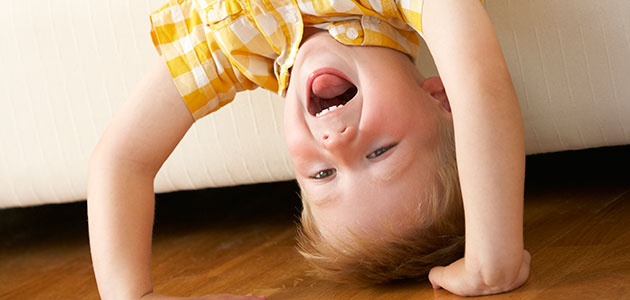Hyperactivity is a behavior disorder children, first described in 1902 by Still. It is children who develop an intense motor activity, moving continuously, without all this activity has a purpose. They go from one place to another and can start any task, but leave quickly to start another, which in turn, again leave unfinished.
This hyperactivity increases when in the presence of others, especially with those who do not have frequent relations. By contrast, the activity decreases when they are alone.
Profile of a hyperactive child
According Still, these children are especially problematic, have a destructive spirit, are insensitive to punishment, fidgety and nervous. They are also difficult to educate children, and rarely can keep your attention on something, which often have academic problems despite having a normal IQ for a long time.
They are very impulsive and disobedient, not usually do what their parents or teachers tell them, or even do the opposite of what they are told. They are very stubborn and obstinate, while having a very low threshold of frustration tolerance, which insist much to get what they want. This coupled with their states of sudden and intense moods and his impulsive and easily excitable temperament, it makes believe frequent tensions at home or at school. In general, they are unable to sit still at times it is necessary that they are children. A child who move a lot during recess and play time is normal. These children, what happens is that they do not sit still in class or on other specific tasks.
Causes of childhood hyperactivity
Childhood hyperactivity is quite common. It is estimated that affects approximately 3 percent of children under seven years and is more common in boys than in girls (occurs in 4 children per woman). In 1914, Dr. Tredgold argued that the causes are due to minimal brain dysfunction, a lethargic encephalitis in which the area is affected behavior, hence the consequent compensatory hyperkinesis; explosiveness in voluntary activity, organic impulsivity and inability to sit still. Later, in 1937, C. Bradley discovered the therapeutic effects of amphetamines on hyperactive children. Based on the above theory, administering them brain stimulant medications (such as Benzedrine), showing a marked improvement of symptoms.
Hyperactivity indicators by age Infant Bodysuit
- 0 to 2 years. clonic discharges during sleep rhythm problems during sleep and food, short periods of sleep and wake up with a start, resistance to usual care, high reactivity to auditory stimuli and irritability.
- 2 to 3 years. Immaturity in expressive language, excessive motor activity, low awareness of risk and susceptibility to numerous accidents.
- From 4 to 5 years. Social adjustment problems, disobedience and difficulties in monitoring standards.
- From 6 years. Impulsivity, attention deficit disorder, school failure, antisocial behavior and social adaptation problems.
Treatment depends on the individual case. The most widely used drug treatment are stimulants, which serve to help the child to concentrate better, and sedatives in case the child to show psychotic features. Psychotherapeutic treatment is intended to improve family and school environment, promoting better integration of the child at a time, that apply behavior modification techniques.
Cognitive therapy is based on the approach to performing tasks where the child learns to plan their actions and improve their internal language. From age 7, the internal language assumes a role of self-regulation, that these children do not have as developed. To carry out any task is taught to first evaluate all the possibilities of it, to concentrate and to check the partial and overall performance once it is finalized.
Symptoms in a hyperactive child
Symptoms can be classified by inattention, hyperactivity and impulsivity:
1. Difficulty to resist distraction.
2. Difficulty sustaining attention in a long and difficult task to selectively attend.
3. Difficulty to explore complex stimuli in an orderly manner.
4. Motor activity excessive or inappropriate.
5. Trouble end now begun tasks.
6. Difficulty to stay seated and / or still in a chair.
7. Presence of disruptive behaviors (with destructive character).
8. Inability to inhibit behaviors: always say what they think, not repressed.
9. Inability to postpone rewarding things you can not stop doing the things they like first and postpone everything that can duties and obligations. Always they end up doing what they want first.
10. Cognitive Impulsiveness: precipitation, even at the level of thought. In games it is easy to beat them for this reason, because things do not think twice before acting, do not provide, and even answer questions before they are asked.











0 komentar:
Posting Komentar